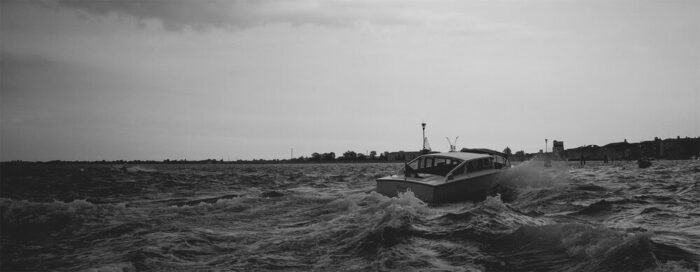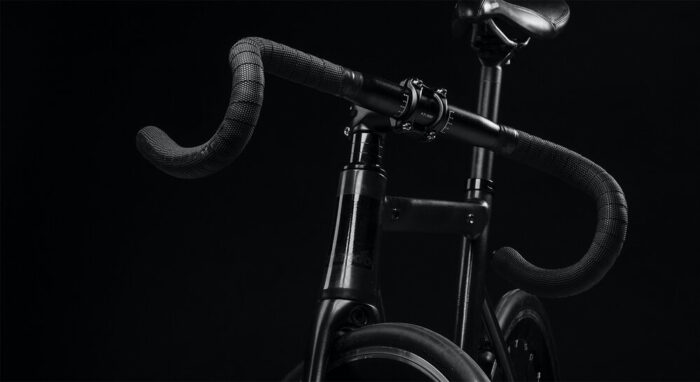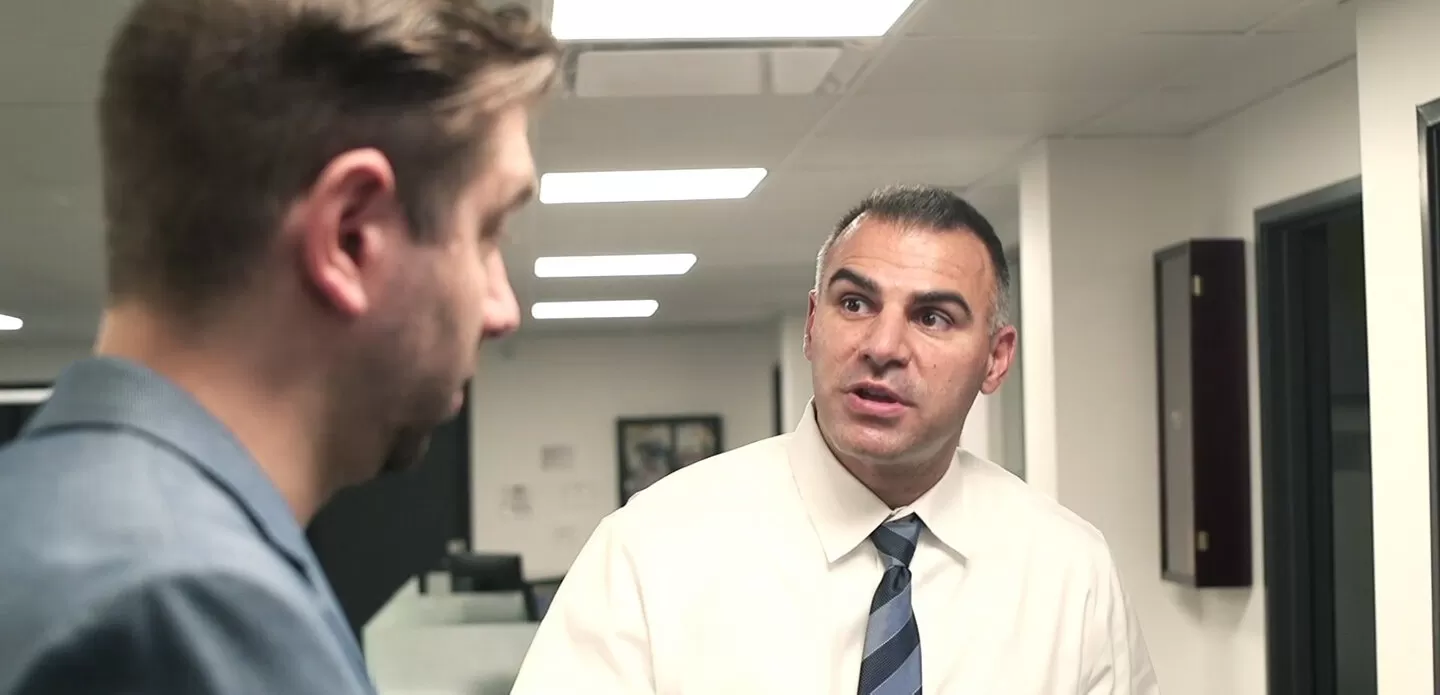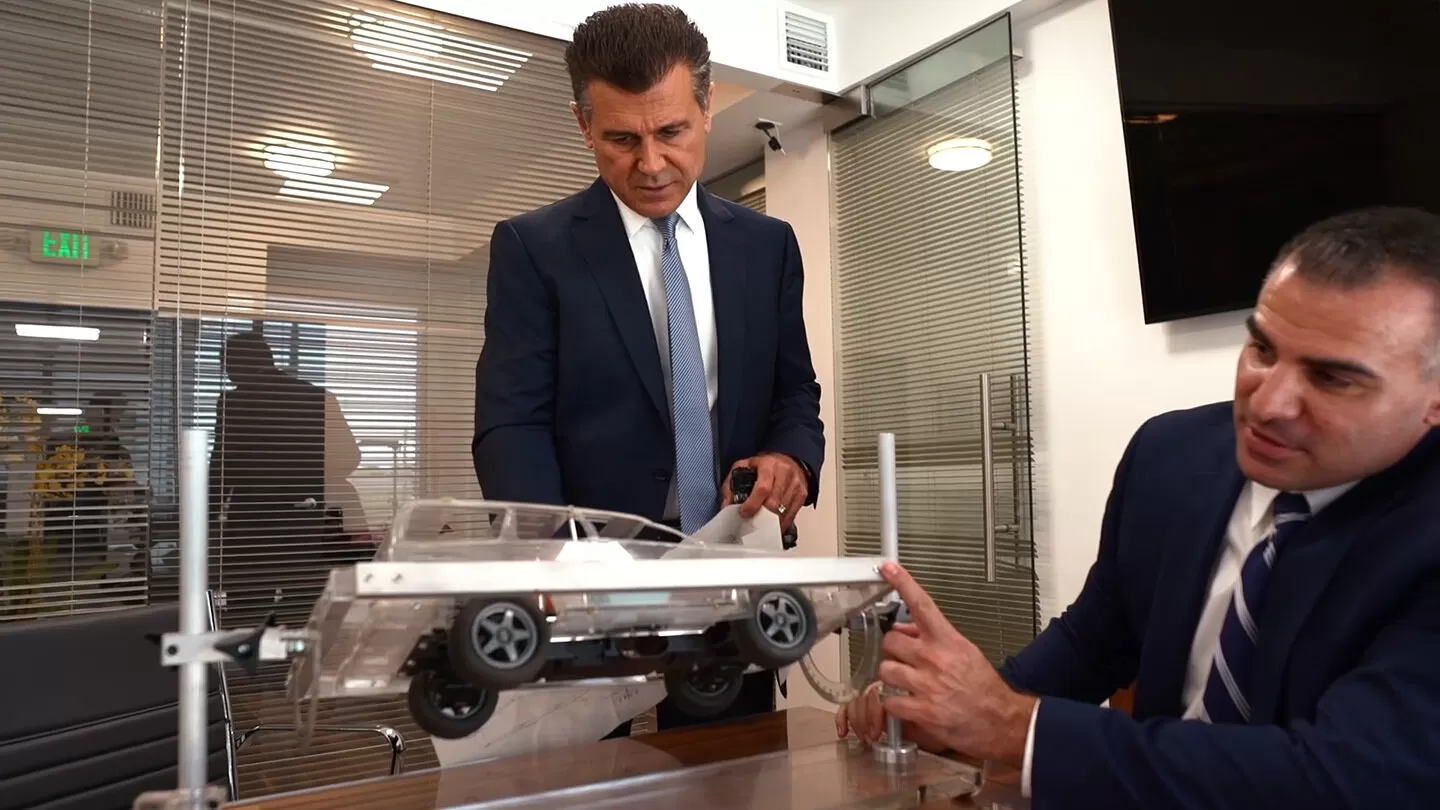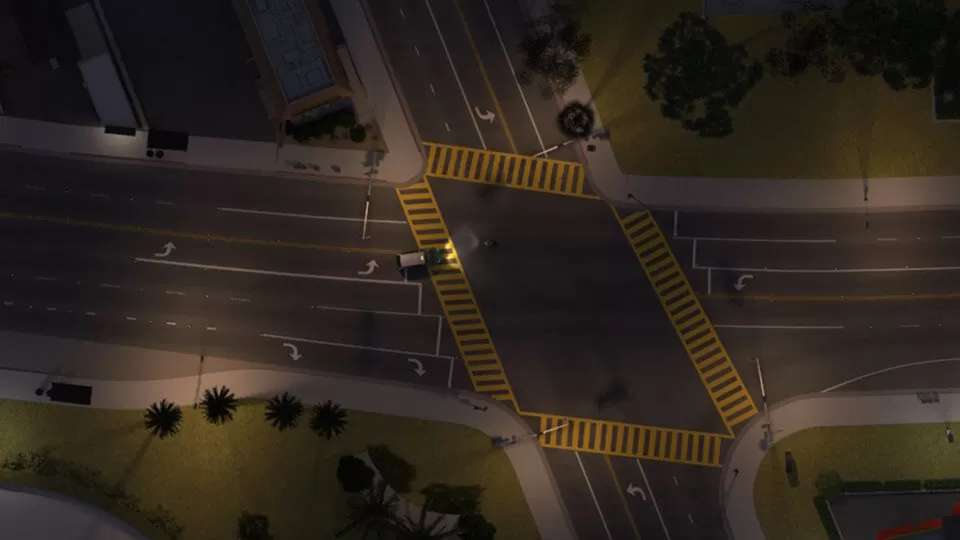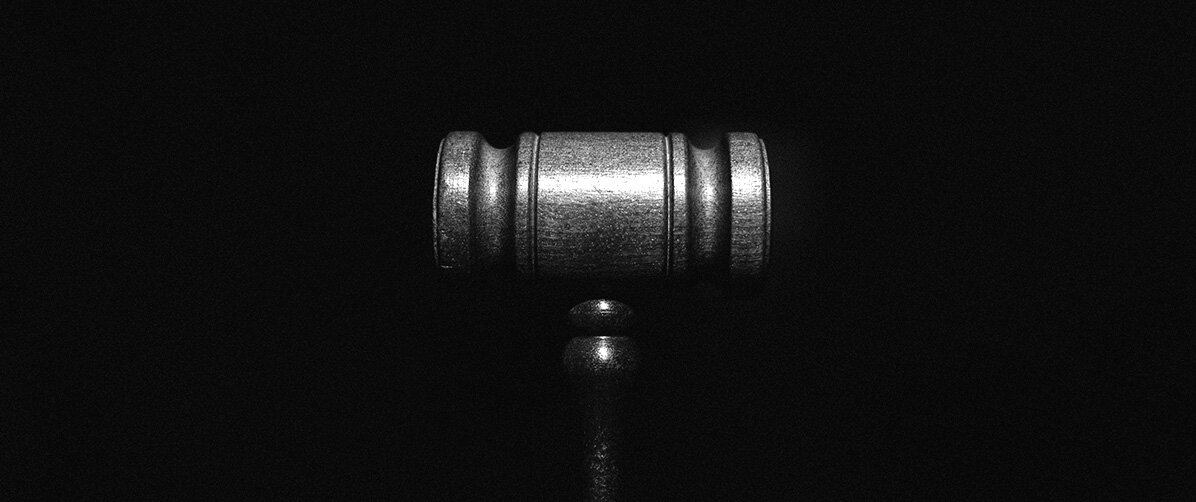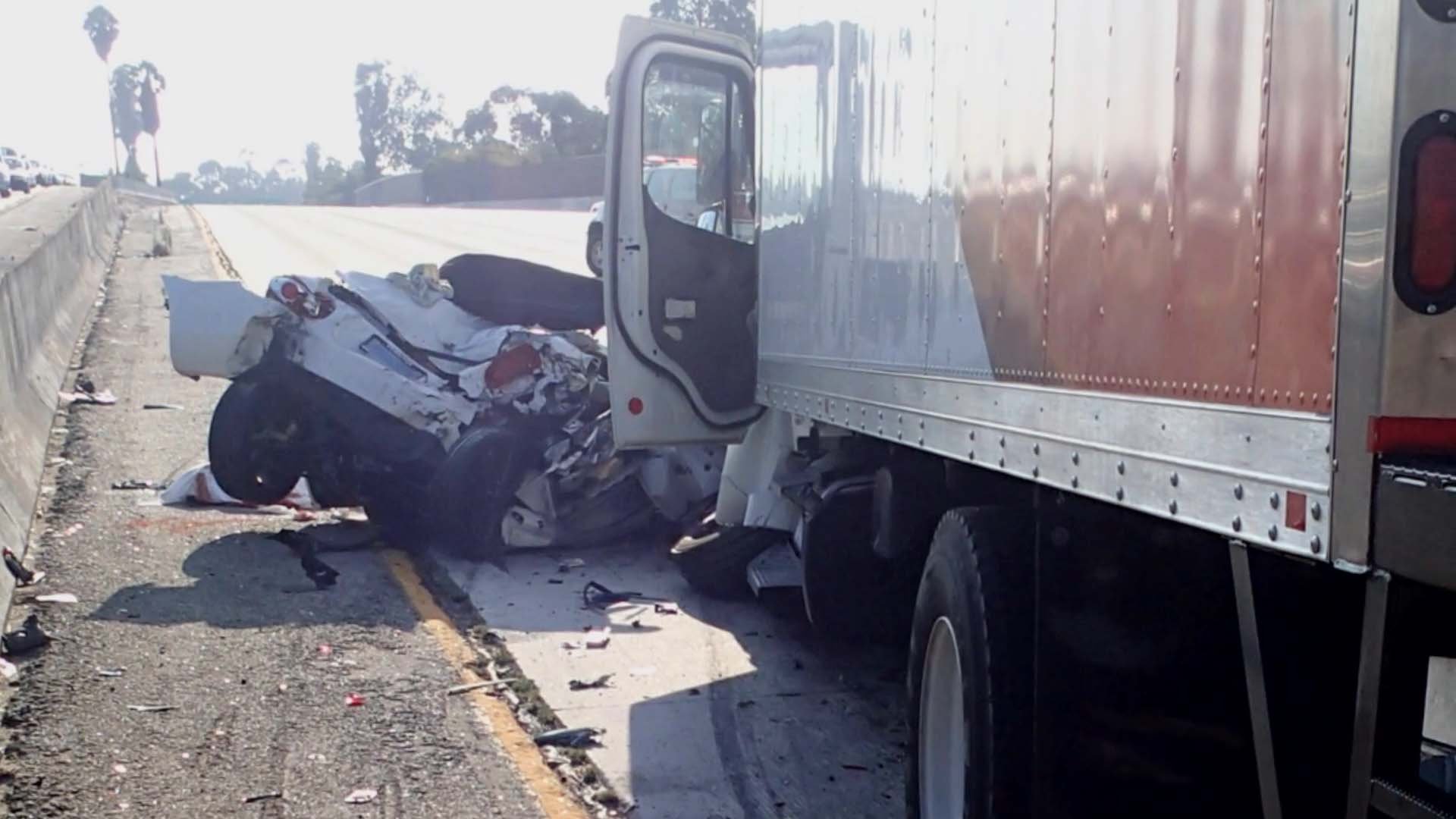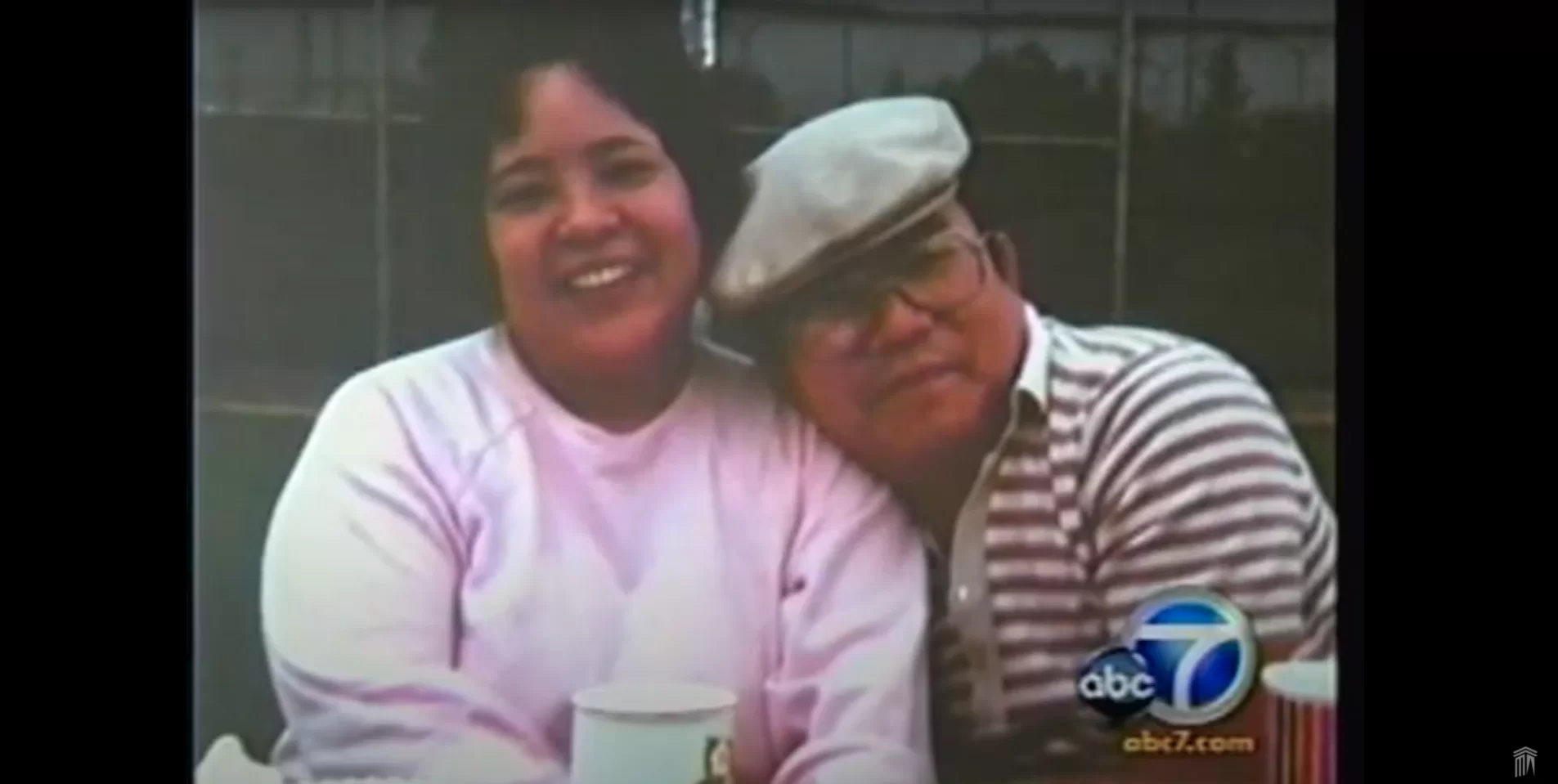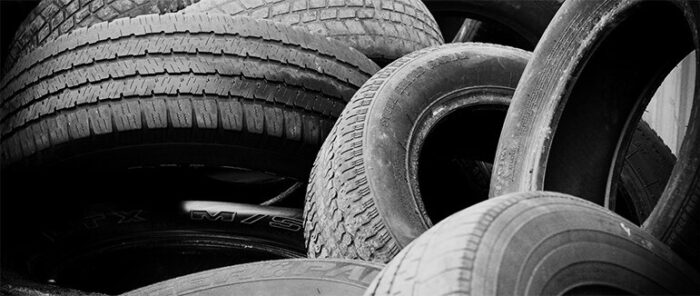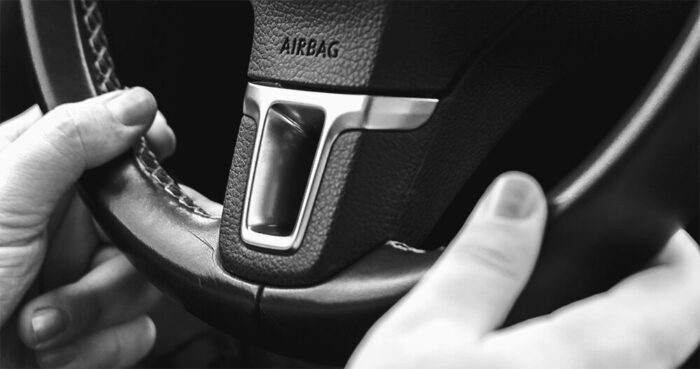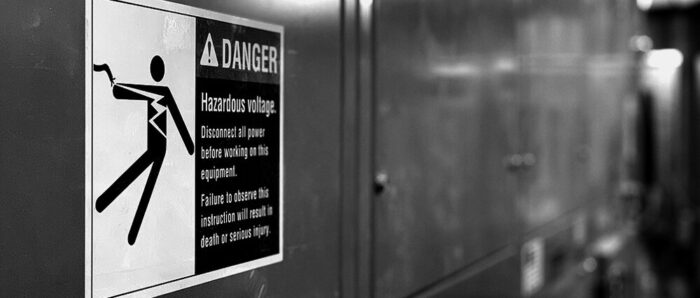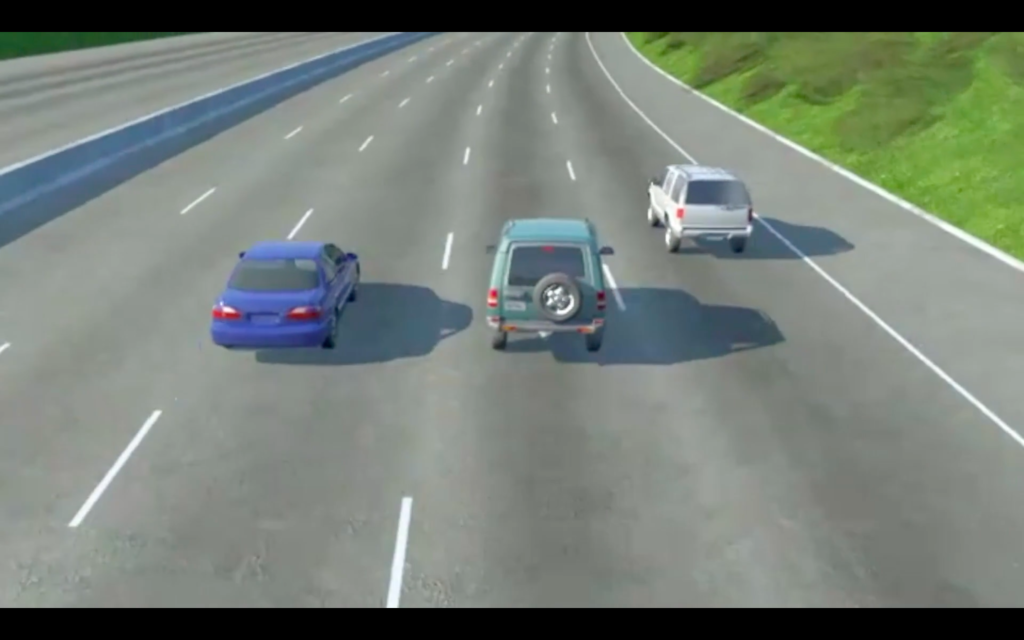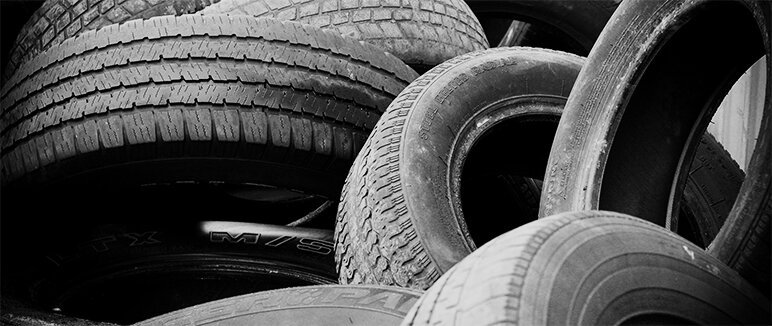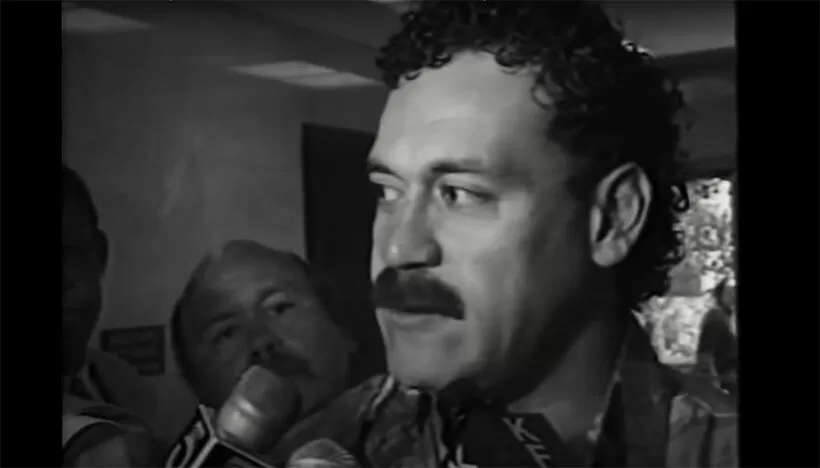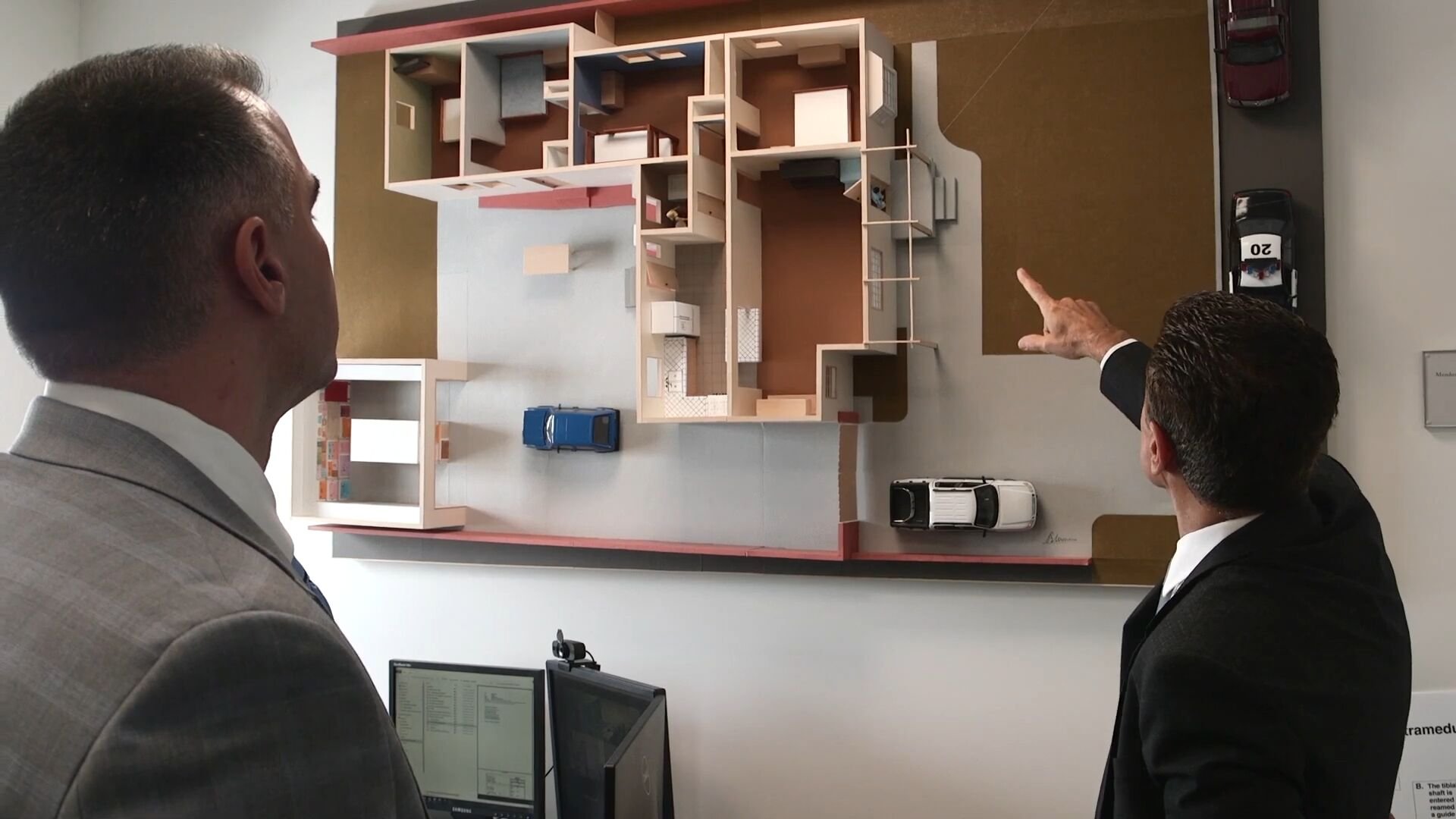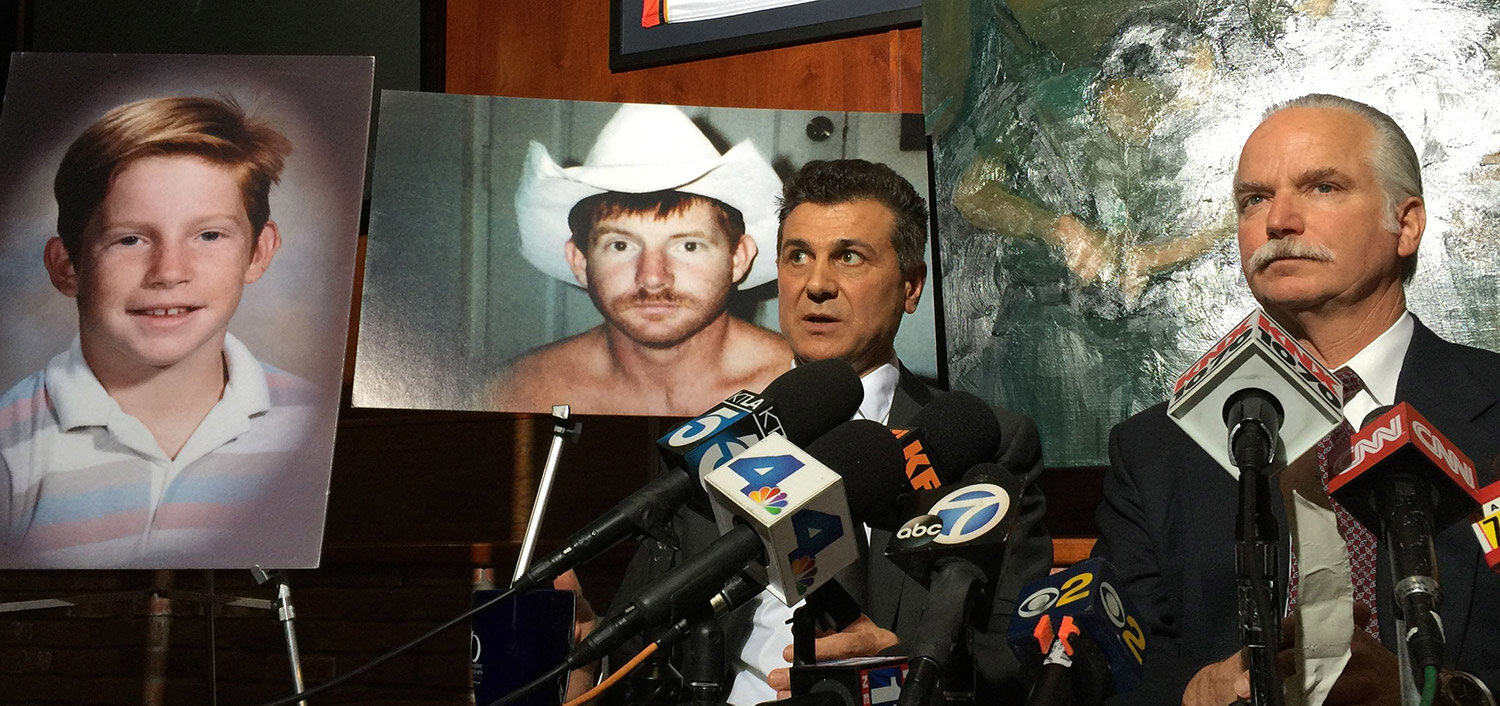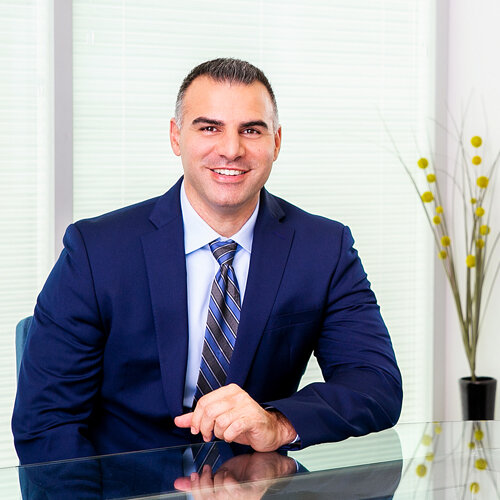Over 40 Years of Fighting For Justice
Our Los Angeles injury attorneys strive to recover the maximum compensation for you whether through settlement or trial. We handle every aspect of your case from start to finish.
Talk to a Los Angeles personal injury lawyer about your case or contact our firm to schedule a no-cost consultation.
Schedule Your Free Case Evaluation
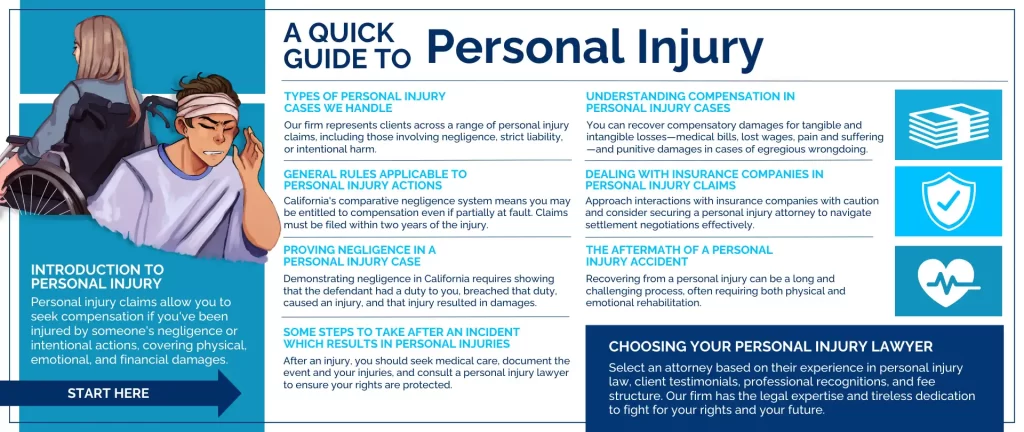
Personal Injury Resources in this Article:
- Introduction to Personal Injury
- Types of Personal Injury Cases We Handle
- General Rules Applicable to Personal Injury Actions
- Proving Negligence in a Personal Injury Case
- Some Steps to Take After an Incident which Results in Personal Injuries
- Understanding Compensation in Personal Injury Cases
- Dealing with Insurance Companies in Personal Injury Claims
- The Aftermath of a Personal Injury Accident
- Choosing Your Personal Injury Lawyer
Introduction to Personal Injury
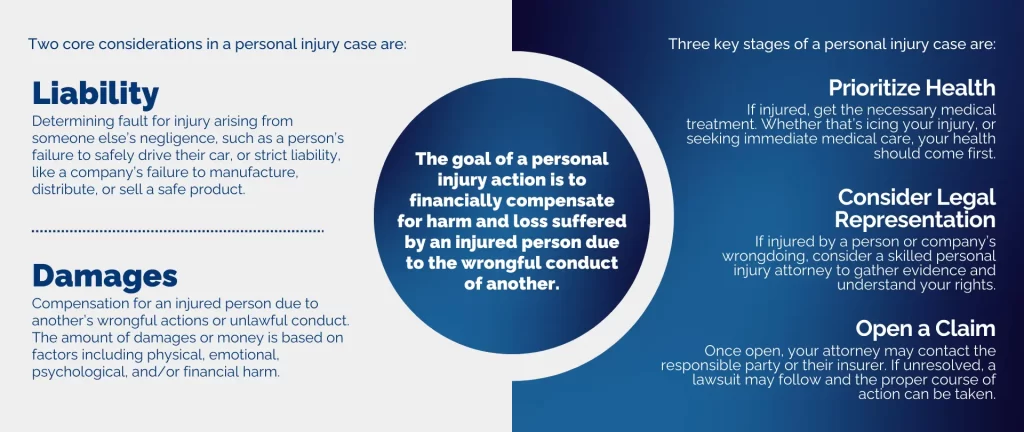
A person suffers a personal injury when he or she is physically, mentally, and/or emotionally harmed by someone else’s unlawful conduct. This could be due to someone else’s actions or inactions.
There are two core considerations that come into play in a personal injury case:
- Liability — This involves determining who is legally at fault for your injury. Liability can arise from someone else’s negligence, such as when your injury is caused by a person’s failure to safely drive his or her car. It could also be caused by a company’s failure to manufacture, distribute, or sell a safe product which resulted in injury (sometimes referred to as strict liability).
- Damages — A person who has been harmed due to the unlawful conduct of another is entitled to compensation (known as damages). The amount of damages or money that an injured person is entitled to is based upon numerous factors, including the physical, emotional, psychological, and/or financial harm suffered. Such factors can also include medical expenses, lost wages, property damages, pain and suffering, loss of love, and the loss of enjoyment of life.
The overarching goal of a personal injury action is to fix, help, and make up for the harm and losses suffered by an injured person due to the wrongful conduct of another. The means by which this is accomplished is through financial compensation.
The Stages of a Personal Injury Case
If you suffered injury, your initial focus should always be on getting the necessary medical attention. This may be as simple as icing to as stressful as undergoing immediate surgical intervention. Your health and well-being should always be number one so always remember to take the best possible route to protect your health.
If the injury was caused by the wrongful conduct of another person or company, you should also consider hiring an attorney with a proven track record in the personal injury field to protect your rights. By hiring an experienced attorney, he or she can immediately start gathering the necessary evidence to prove your case. This includes obtaining any videos of the incident, speaking to witnesses, inspecting the scene of the collision, gathering the physical evidence, obtaining the traffic collision report, and speaking to the insurance company. Your attorney will also be able to evaluate your case, discuss potential avenues of success, and help you understand your legal rights.
Once the formal claim is opened, your attorney may also send information to the responsible party and/or his or her insurance company. If the claim does not resolve, then a lawsuit may be filed. The proper course of action will depend on a variety of factors, including the complexity of the case, the nature and extent of the injuries, and the number of parties that bear fault for your injury.
Types of Personal Injury Cases We Handle
As mentioned earlier, personal injury law concerns injuries or physical, emotional, or material damages as a result of another person’s negligence or actions.
Whether your personal injuries were caused by someone else’s negligence, a product defect, or a violation of your civil rights, our firm offers exceptional legal expertise backed by years of experience, personal dedication to our clients, and successful case outcomes. Led by award-winning personal injury attorneys Garo Mardirossian and Armen Akaragian, our team is prepared to provide aggressive representation and personalized legal guidance for your in various types of personal injury cases.
Personal Injury Cases Involving Negligence
Negligence is the most common claim brought in a personal injury action. Under most circumstances, the law requires every person to conduct himself or herself in a reasonable fashion. When someone fails to exercise that degree of care that is required, then that person is negligent.
Under California law, there are four essential elements which need to be proven by a preponderance of the evidence (more likely true than not true) to establish negligence. Those elements are the following:
- A legal duty
- A breach of that duty
- The breach resulting in harm
- The nature and extent of the damages caused by that harm
Common types of personal injury actions arising out of a person’s negligence include catastrophic injuries, motorcycle crashes, truck accidents, car wrecks, boat accidents, and pedestrian mishaps.
Catastrophic Injury Cases
These are cases involving severe, life-altering injuries like spinal cord or brain injuries, which require life-long medical treatment and rehabilitation. Some of our catastrophic injury case victories include:
Motor Vehicle Collision Cases
Motor vehicle collisions are a daily occurrence. They include motorcycle accidents, truck accidents, car accidents, bicycle accidents, and even boat accidents. These cases often involve a failure to exercise due care on the road or other negligent behavior that results in serious injuries, permanent disability, and even death. Some of our motor collision case victories include:
Personal Injury Cases Involving Strict Liability
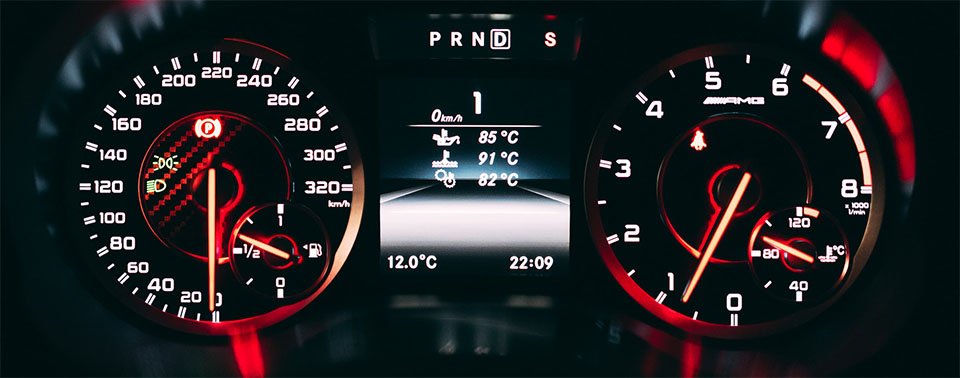
Sudden Unintended Acceleration
Strict liability differs from negligence in that the defendant is held responsible for the harm caused, regardless of whether he, she, or it is “at fault” for what happened. In these types of cases, the focus is not on the defendant’s conduct, but on the type of activity or product that caused the harm. Your attorney can help prove that your injury occurred as the result of a defective product or an inherently dangerous activity by the wrongdoer, even if he or she was not negligent or did not intend to cause harm.
Common types of personal injury cases involving strict liability include injuries resulting from the use of faulty products, motor vehicle collisions caused by defective tires/dangerous roadways, or dog bite injuries.
Auto and Tire Defect Cases
While automakers and tire manufacturers represent to consumers that their products are safe and reliable, that is not always the case. Malfunctioning products, defective vehicles, and improperly installed parts can cause or contribute to collisions on California roadways. Some of our auto and tire defect case victories include:
- Pannu v. Land Rover (2011) — $25.2 million recovery
- Gozukara v. Ford Motor Co. (2002) — $14.9 million settlement
- Nazaryan v. Confidential (2012) — Dangerous pressure washer
- Abgaryan v. Confidential (2014) — Recalled tire results in crash
- Marino v. Confidential (2016) — Vehicle accelerates out of control
- Rodriguez v. Confidential (2012) — SUV rollover results in brain injury
- Moore v. Confidential (2004) — Vehicle Seat Failure
Personal Injury Cases Involving Intentional Wrongdoing
Intentional wrongs occur when someone intentionally causes harm to another person. In these types of personal injury actions, one must show that more likely than not the wrongdoer acted with the intent to cause harm or with a conscious disregard for the rights and safety of others. Some intentional wrongs also result in criminal prosecution.
Common types of personal injury cases involving intentional wrongdoing include assault and battery, civil rights violations, and intentional actions that result in someone’s wrongful death.
Civil Rights Violations
Civil rights violations can arise out of various forms of misconduct. That misconduct could range from a police officer’s disregard for one’s constitutional rights to the improper lethal use of force resulting in death. Some of our victories in the civil rights arena include:
- Dole v. County of Los Angeles — $24.85 million verdict
- Mendoza v. County of Los Angeles — $14.25 million settlement
- Valenzuela v. City of Anaheim — $15.7 million recovery
- Zerby v. City of Long Beach — $6 million verdict
- Hernandez v. City of Fullerton — $8 million settlement
- Thomas v. City of Fullerton — $4.9 million settlement
Wrongful Death Cases
After the loss of a loved one, money will likely not be the first thought on grieving family members minds. Unfortunately, surviving family members may soon find themselves overwhelmed with mounting expenses and the lack of financial and emotional support to make it through a very trying time. When you have lost a loved one, you may be able to bring a wrongful death action and recover damages for the loss of love, companionship, comfort, care, assistance, protection, affection, society, moral support, training, and guidance. Some of our wrongful death victories include:
- Smith v. MV Transportation, Inc (2022) — $29.8 million recovery
- Mendoza v. County of Los Angeles (2018) — $14.25 million settlement
- Baker v. Four Winds (2007) — $13.7 million verdict
- Castro v. Green Farms (2019) — $10.6 million settlement
- Babalyan v. City of Los Angeles (2022) — $5.4 million settlement
- Uno v. Bello (2012) — $11.9 million recovery
- Valenzuela v. City of Anaheim (2023) — $15.7 million recovery
General Rules Applicable to Personal Injury Actions
California personal injury actions are governed by statutes, case law, and regulations, each of which has an important impact on how personal injury claims are processed, litigated, tried, and resolved. Los Angeles operates under the broader umbrella of California state law, but it also has unique local ordinances and court procedures that can affect personal injury claims-including specific traffic or public property rules.
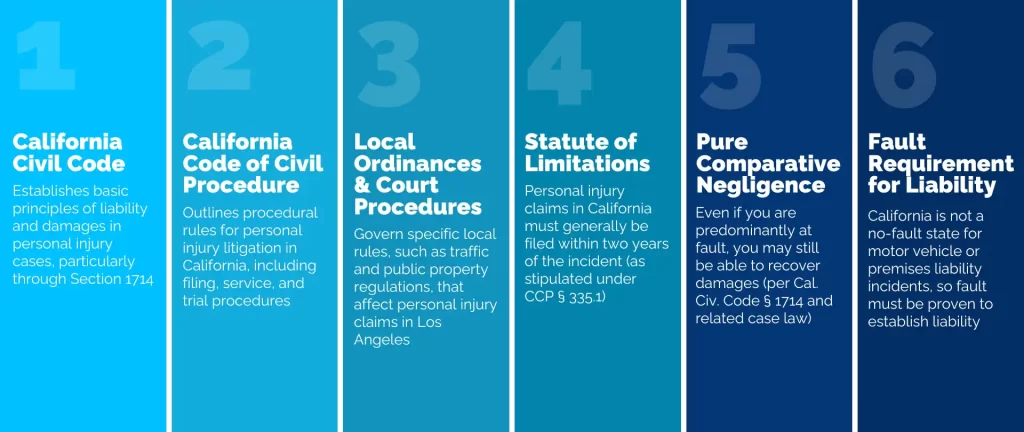
There are several key aspects that set the State of California apart when pursuing a personal injury claim:
- Comparative negligence system — California follows a “pure comparative negligence” system. California Civil Code § 1714 establishes a broad duty of care under which everyone is responsible for the injuries they cause. This rule means that the damages you recover may be be reduced by your own percentage of fault—but crucially, it also means you may be able to recover some damages even if you are found to be more at fault than the other party.
- Not a no-fault state — California is not a no-fault state for motor vehicle or premises liability incidents, which means that the driver or landowner responsible for the harm (or his or her insurance company) must be shown to be liable for the damages.
California Personal Injury Laws and Your Rights
Most personal injury claims in California are governed by the Civil Code, which outlines the general principles of liability and damages and the California Code of Civil Procedure, which provides the procedures for litigating personal injury cases. However, there are also specific statutes, such as those governing comparative negligence and damage caps for certain types of cases. Considering this legal maze, it is important to schedule a consultation with a personal injury attorney as early as possible so that he or she can help you understand your legal rights.
Statute of Limitations for Personal Injury Claims in California
The statute of limitations for personal injury actions in California is governed by the California Code of Civil Procedure. Generally, a personal injury lawsuit must be filed within two years from the date of the injury as outlined in CCP § 335.1. However, there are a few exceptions. For example, a claim against a governmental entity usually needs to be filed within six months of the injury. Other exceptions include extended filing periods for cases involving minors, and tolling of the statute of limitations in cases where the plaintiff is incapacitated or the plaintiff is a victim of sexual abuse. In any case, it is prudent to seek the legal advice of a personal injury attorney as soon as possible.
Proving Negligence in a Personal Injury Case
Negligence is the most common cause of action brought in a personal injury case.
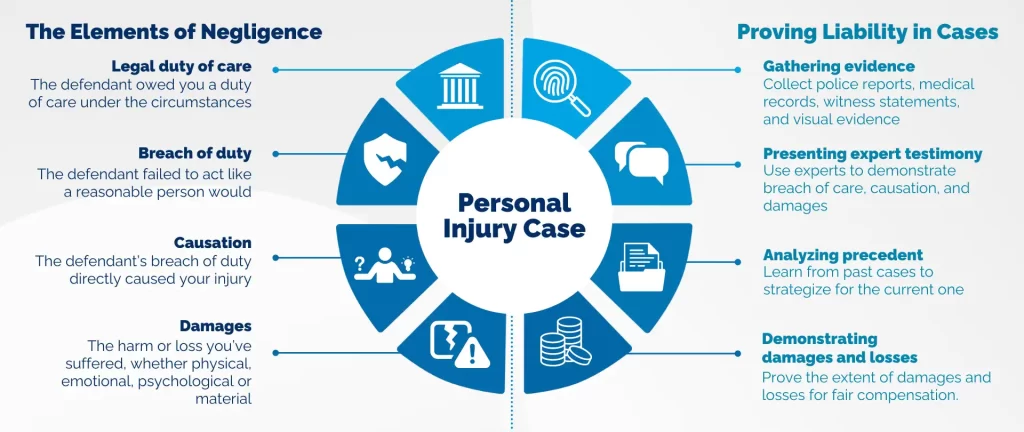
The Elements of Negligence
As already mentioned, negligence involves the failure to exercise the degree of care that a similarly situated person would have exercised in the same situation. To prove negligence in a personal injury case, the injured party must usually show:
- Legal duty of care — That the defendant owed a duty of care. The existence of a duty can based on a variety of factors, including the foreseeability of harm, whether a special relationship existed between the parties (i.e. employer-employee), whether a party voluntarily undertook a duty, or the law created a duty.
- Breach of duty — That the defendant breached this duty. The breach is measured by what a reasonable person would have done under similar circumstances.
- Causation — That the defendant’s breach caused or contributed to the harm.
- Damages — The nature and extent of the harm suffered by the injured party. This includes physical, emotional, or psychological harm. It also includes medical expenses and lost earnings.
Proving Liability in Negligence Cases
Proving liability in a negligence case can be a complex process that involves:
- Gathering evidence — This includes gathering all relevant information, such as traffic crash reports, witness statements, photos or videos of the scene, and medical records.
- Presenting expert testimony — Using the assistance of experts to establish the breach of a standard of care, causation, and damages.
- Analyzing precedent — Understanding how similar cases have been decided in the past to come up with a strategy on how to approach the current case.
- Demonstrating damages and losses — Demonstrating the extent of the damages and losses suffered so that the victim can receive just compensation.
Some Steps to Take After an Incident which Results in Personal Injuries
Navigating the aftermath of a personal injury incident involves a number of steps that could be important to ensure a successful outcome.
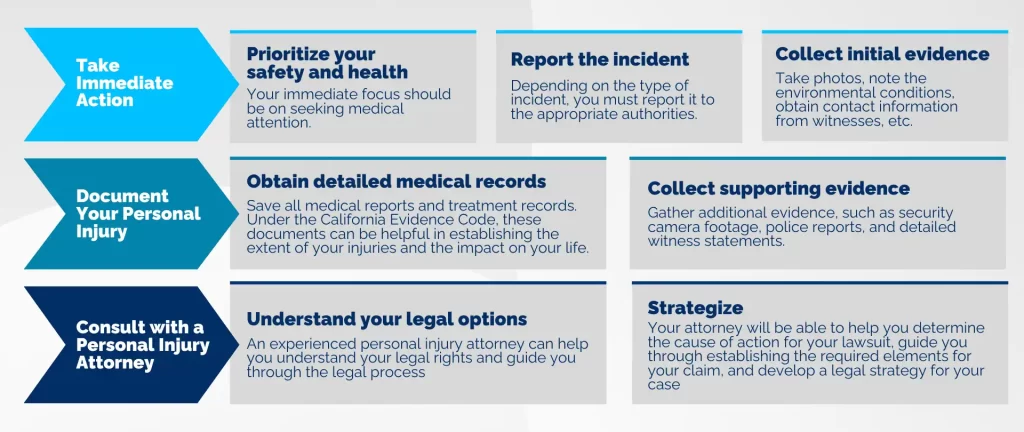
Take Immediate Action
- Prioritize your safety and health — Your immediate focus should be on seeking medical attention.
- Report the incident — Depending on the type of incident, you must report it to the appropriate authorities. For traffic accidents, for example, California Vehicle Code § 16000 sometimes requires that accidents resulting in injury be reported.
- Collect initial evidence — If possible, collect evidence at the scene. Take photos, note the environmental conditions, obtain contact information from witnesses, etc.
Document Your Personal Injury
- Obtain detailed medical records — Save all medical reports and treatment records. Under the California Evidence Code, these documents can be helpful in establishing the extent of your injuries and the impact on your life.
- Collect supporting evidence — Gather additional evidence, such as security camera footage, police reports, and detailed witness statements.
Consult with a Personal Injury Attorney
- Understand your legal options — An experienced personal injury attorney can help you understand your legal rights and guide you through the legal process, including the statute of limitations as outlined in California Code of Civil Procedure § 335.1.
- Strategize — Your attorney will be able to help you determine the cause of action for your lawsuit, guide you through establishing the required elements for your claim, and develop a legal strategy for your case while taking into account various California laws (see e.g. California Civil Code § 1714).
Understanding Compensation in Personal Injury Cases
Understanding how damages are assessed and determined in personal injury cases is key to understanding the potential value of your claim and the types of compensation you may receive.
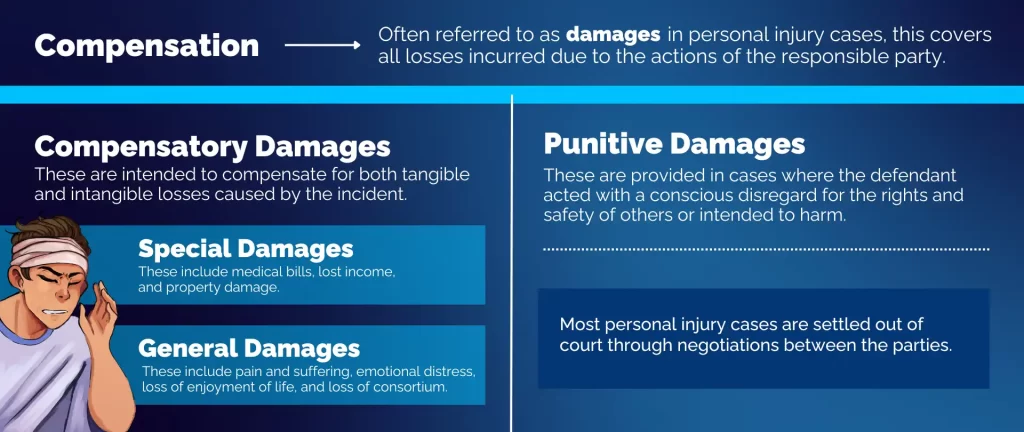
What Compensation Can I Recover After a Personal Injury Accident?
Compensation in personal injury cases, known as “damages,” includes all losses caused by the wrongdoer. These damages are generally compensatory in nature and are intended to make the injured plaintiff whole. In some cases, punitive damages are also awarded to punish and deter the wrongdoer.
- Compensatory damages — These are intended to compensate for both tangible and intangible losses caused by the incident.
- Special damages — These include medical bills, lost income, and property damage. They also include the cost of treatment already received and the estimated cost of future care, as well as lost earning capacity.
- General damages — These include pain and suffering, emotional distress, loss of enjoyment of life, and loss of consortium. For example, the inability to enjoy hobbies or spend time with loved ones due to injuries sustained in a collision are all compensable.
- Punitive damages — These are provided in cases where the defendant acted with a conscious disregard for the rights and safety of others or intended to harm. Unlike compensatory damages, punitive damages are intended to punish the defendant and the amount is determined by the egregiousness of the conduct.
Most personal injury cases are settled out of court through negotiations between the parties. The amount of the settlement can vary greatly and can depend on the specifics of each case and the expertise your attorney has in handling your case.
Dealing With Insurance Companies in Personal Injury Claims
Dealing with insurance companies after a personal injury can be a complex and difficult process. It not only requires a keen understanding of how insurance companies evaluate and manage claims, but also requires a vast array of knowledge to understand what a case is worth.
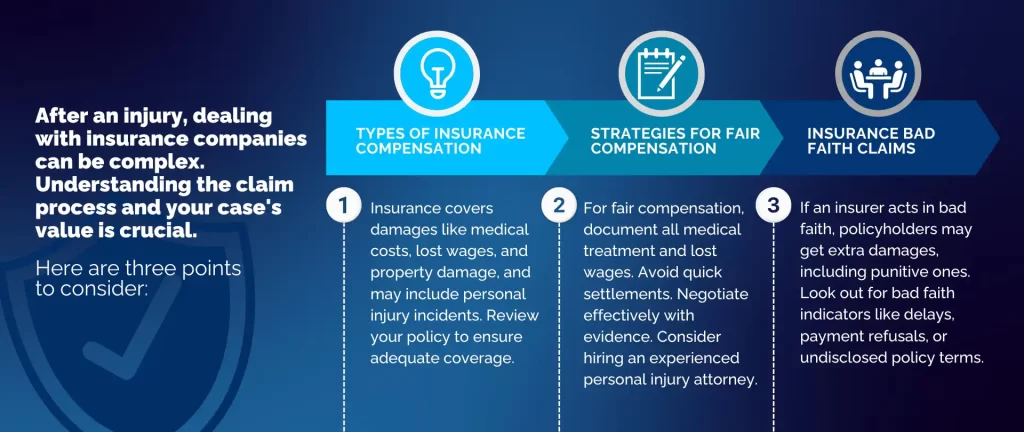
Insurance companies sometimes are focused on minimizing payouts, so equipping yourself with the proper knowledge is essential to protecting your interests and ensuring that you are fairly compensated for your injuries and losses.
How to Deal With Insurance Companies in Personal Injury Claims
- Types of insurance compensation — Insurance companies can pay for several types of damages, including medical expenses, lost wages, pain and suffering, and property damage. It is important to note that your insurance may also cover your for damages caused by a personal injury incident so you need to understand the specifics of your insurance policy.
- Strategies for fair compensation — To help you receive fair compensation for your personal injuries, it is sometimes a good idea to:
- Document — Keep records of all medical treatment, lost wages, and how the injury affects your daily life.
- Avoid early settlement offers — Insurance companies may offer a quick settlement that is lower than what your case is worth.
- Negotiate effectively — Be prepared to counter low settlement offers with evidence of your damages and a clear understanding of what your claim is worth.
- Hire an attorney — Hire an experienced personal injury attorney to handle your case so that you can obtain the amount you are entitled to under the law.
- Insurance bad faith claims — If an insurance company unreasonably denies a claim or fails to negotiate in good faith, they may be subject to an insurance bad faith claim. Indicators of bad faith include unnecessary delays in investigating claims, refusal to pay a valid claim, or failure to disclose policy limitations and exclusions. In such cases, the policyholder may be entitled to damages in excess of the original policy limits, including punitive damages.
The Aftermath of a Personal Injury Accident
Recovery from a personal injury accident is more than just coping with the immediate physical injuries; it also involves assessing the economic and non-economic damages flowing from someone else’s negligence.
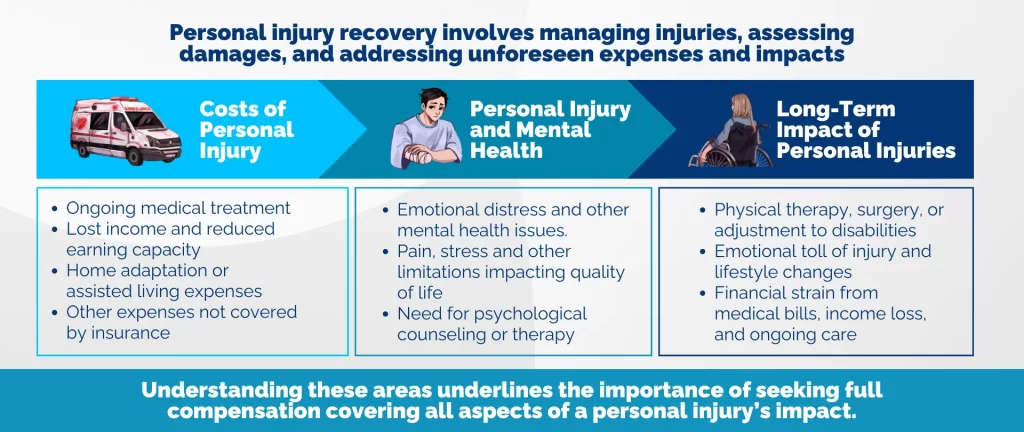
The Cost of Personal Injury
Personal injury accidents can result in a wide range of expenses and losses, many of which may not be immediately apparent:
- Ongoing medical treatment — Long-term medical care, rehabilitation and therapy may be required, especially for serious injuries. These ongoing treatments can add up to many millions of dollars over time.
- Lost income and reduced earning capacity — Time away from work during recovery and the potential inability to return to previous employment or to work at all can have a significant financial impact.
- Lifestyle changes — Serious injuries may require changes to the home, such as modifications for wheelchair accessibility, or may require assisted living services.
- Non-medical expenses — There are often additional costs associated with injuries, such as transportation to medical appointments, hiring household help, and other expenses not covered by insurance.
Personal Injury Claims and Mental Health
The psychological impact of a personal injury is often overlooked, yet it can be one of the most significant aspects of the claim:
- Trauma and emotional distress — Traumatic events can lead to post-traumatic stress disorder (PTSD), anxiety, depression and other mental health issues.
- Impact on quality of life — Chronic pain, physical limitations and the stress of financial burdens can significantly affect one’s overall quality of life.
- Need for psychological support — Counselling or therapy can play a vital role in dealing with the mental and emotional impact of an injury. These services should be considered as part of the recovery process.
The Long-Term Impact of Personal Injuries
The effects of personal injuries are extensive, touching every aspect of a person’s life:
- Physical challenges — Depending on the severity of the injury, victims of a personal injury may face a long road to recovery, including physical therapy, surgery, or adjustment to permanent disabilities.
- Emotional toll — The emotional burden of coping with injury, lifestyle changes and financial stress can quickly become overwhelming.
- Financial strain — In addition to medical bills, the loss of income and potential future earnings, as well as the need for ongoing care and support, can create significant financial challenges.
Understanding these areas is crucial for anyone dealing with the aftermath of a personal injury and highlights the importance of seeking comprehensive compensation that covers all aspects of the injury’s impact.
Choosing Your Personal Injury Lawyer
Selecting the right personal injury lawyer is an important decision that can have a significant impact on the outcome of your case.
What a Good Personal Injury Lawyer Can Do for You

A skilled personal injury lawyer brings a wealth of expertise and resources to your case, including:
- Representing you in court — Navigating the complexities of the legal system and representing your interests effectively in court.
- Negotiating with insurance companies — Negotiating with insurance companies to ensure you receive fair compensation.
- Gathering evidence — Collecting and gathering vital evidence in support of a righteous case.
- Engaging expert witnesses — Hiring experts, who can be crucial in proving certain aspects of a case, including the extent of the injuries or which parties bear responsibility.
- Providing accident reconstruction and visual aids — Using tools such as 3D models and CGI re-enactments to vividly demonstrate how the collision occurred.
- Advocating for you — Zealously advocating for you to ensure that all those responsible are brought to justice .
Evaluating a Personal Injury Lawyer

When evaluating a personal injury lawyer, consider the following:
- Experience and specialization — Look for a lawyer with specific experience in personal injury law and a track record of successfully handling similar cases.
- Client testimonials and reviews — Review previous client feedback.
- Professional recognition — Look at the awards, certifications, and recognitions from recognized legal associations that the attorney has received.
- Initial consultation — Assess the lawyer’s understanding of your case, approach, and communication style.
Cost of Hiring a Personal Injury Attorney in Los Angeles

- Contingency fees — Most personal injury attorneys work on a contingency fee basis, meaning they only get paid if you win your case. While specific percentages may vary, this arrangement aligns their interests with yours.
- No upfront costs — There are usually no upfront costs associated with hiring a personal injury lawyer on a contingency basis. Costs incurred during the case (such as court fees, document costs, etc.) are usually advanced by the attorney and later reimbursed from the recovery. Choosing a reputable firm is often crucial here, as the firm will often have the war chest to take on the opposition without running out of financial resources.
- Transparent fee structure — Make sure the fee structure is clearly outlined in your agreement with the attorney so that you understand what percentage of the settlement or award will go toward legal fees.
Choosing the right personal injury attorney means finding someone who not only has the legal expertise, but also the dedication to fight for your best interests.
Contact Mardirossian Akaragian LLP
Our firm offers exceptional talent, abundant resources, tireless dedication, and years of experience to give you the best chance of success in obtaining maximum compensation. Led by our award-winning attorneys, Garo Mardirossian and Armen Akaragian, we are prepared to provide you with the aggressive representation and personalized legal guidance you need.
Talk to a Los Angeles personal injury lawyer about your case or contact our firm to schedule a no-cost consultation.
Schedule Your Free Personal Injury Case Evaluation
Article By
ARMEN AKARAGIAN
Admitted to practice in 2006, Armen has arbitrated, tried, and settled several cases which have resulted in multi-million dollar verdicts and settlements.
Sources cited in this article:
“California Personal Injury Laws and Statute of Limitations” — AllLaw
“Negligence” — American Bar Association
“Personal Injury Claims” — American Bar Association
“Personal Injury Cases” — California Courts | Self Help Guide
“Insurance Code § 1033” — California Legislative Information
“Negligence” — Cornell Law School | Legal Information Institute
“Personal Injury” — Cornell Law School | Legal Information Institute
“Pain and Suffering Damages in Personal Injury Cases: An Empirical Study” — Cornell Law School
“California Personal Injury FAQ: Lawsuit Questions & Answers” — Enjuris
“How to Handle a California Insurance Bad Faith Claim” — Enjuris
“Personal Injury Lawyer: What Does a PI Attorney Do?” — Enjuris
“What Documents Do I Need in a Personal Injury Claim?” — Enjuris
“Insurance Claims After an Accident: The Basics” — FindLaw
“Injury Claims and Insurance” — FindLaw
“Injury Law Basics” — FindLaw
“Personal Injury FAQ’s” — FindLaw
“Torts and Personal Injuries” — FindLaw
“Types of Personal Injuries” — FindLaw
“What Is a Personal Injury Lawsuit?” — FindLaw
“California Personal Injury Statute Of Limitations 2024” — Forbes
“California Personal Injury Law” — HG.org
“Four Elements of a Personal Injury Claim” — HG.org
“How a Doctor Can Make or Break a Personal Injury Case” — HG.org
“Personal Injury Claims for Mental Health Injuries” — HG.org
“What Constitutes Insurance Bad Faith in California?” — HG.org
“What Are Personal Injury Lawsuits and Claims?” — HG.org
“Causation in Personal Injury Lawsuits” — Justia
“Personal Injury Law FAQs” — Justia
“Proving Fault and Damages in Personal Injury Lawsuits” — Justia
“Types of Damages in Personal Injury Lawsuits” — Justia
“What Types of Injuries Can Form the Basis for a Lawsuit?” — Justia
“4 Key Facts About Personal Injury Law in California” — Lawyer Monthly
“Code of Ordinances | Los Angeles County, CA” — Municode Library
“How Do I File a Personal Injury Lawsuit?” — Nolo
“How Do Insurers Value an Injury Claim?” — Nolo
“Personal Injury Claims: When You Need a Lawyer” — Nolo
“Personal Injury Damages and Compensation” — Nolo
“Personal Injury Definition” — Nolo
“Understanding Health Insurance Claims on Personal Injury Settlements” — Nolo
“What is ‘Pain and Suffering’ in a Personal Injury Case?” — Nolo
“What Insurance Tactics May Qualify as Bad Faith in California?” — Super Lawyers
“General Jurisdiction Personal Injury (PI) Court” — The Superior Court of California | County of Los Angeles
“Insurance Bad Faith” — Wikipedia
Additional image credits on individual focus pages.



